Imagine turning your everyday home into a sanctuary that inspires creativity, comfort, and modern elegance. More people than ever seek living spaces that blend style, innovation, and true relaxation.
Modern design has the power to elevate your well-being and daily experience. With the right approach, anyone can master house interior modern design and create a home that feels both sophisticated and functional.
This expert-backed guide will walk you through every step. Discover key principles, color and material trends, layout tips, smart technology, personalization, and sustainable choices for inspired living in 2025.
Defining Modern House Interior Design in 2025
Modern house interiors for 2025 are shaped by a blend of timeless design principles and forward-thinking trends. To truly master house interior modern design, it is essential to understand the foundations, evolving influences, and the role of personalization in creating a space that feels both innovative and inviting.
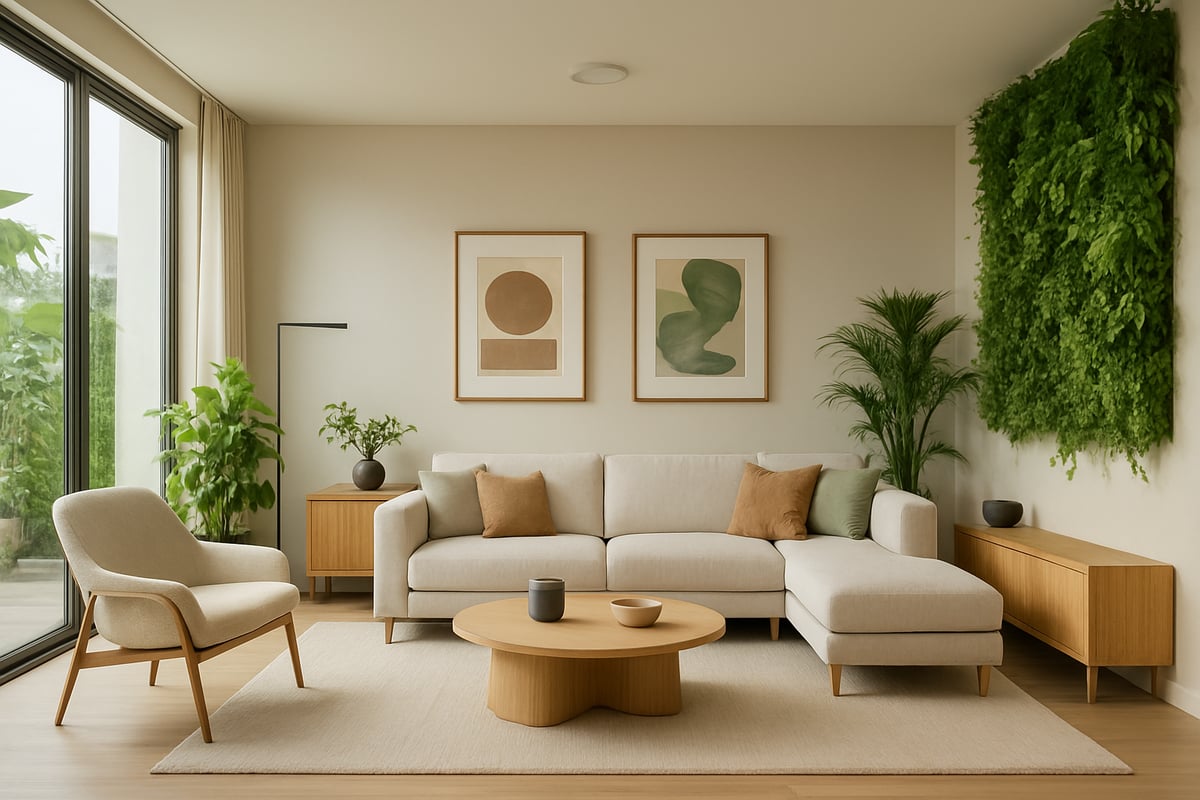
Key Principles of Modern Interior Design
At the heart of house interior modern design are several core principles that set the tone for any space. Simplicity and functionality come first, guiding the selection of furniture and décor. Minimalism is embraced, with clutter-free surfaces and purposeful elements.
Open spaces create a seamless flow between rooms, allowing natural light to fill the home. Geometric shapes and clean lines define both architecture and furnishings. Technology is integrated thoughtfully, enhancing convenience and comfort without overwhelming the design. A strong connection to the outdoors is achieved through large windows and organic materials, ensuring the home feels fresh and energizing.
Evolving Trends Shaping 2025 Interiors
The landscape of house interior modern design is rapidly evolving in 2025. Biophilic design and nature-inspired elements are on the rise, bringing greenery and natural textures indoors. Sustainability is a top priority, with 65% of homeowners now choosing eco-friendly or recycled materials.
Phygital design is blending digital and physical experiences, while modular, multi-functional furniture supports flexible living. For a deeper dive into these trends, the Essential Guide to Casa Decor Trends 2025 offers expert insights. These shifts ensure modern homes are adaptable, responsible, and deeply connected to both technology and nature.
Distinguishing Modern from Contemporary and Other Styles
Understanding how house interior modern design differs from other styles is key. Modern design is rooted in timelessness, sticking to established principles, while contemporary design adapts to current trends.
| Style | Color Palette | Key Features | Technology Use |
|---|---|---|---|
| Modern | Neutral, earthy | Clean lines, minimalism | Integrated, subtle |
| Contemporary | Bold, trendy | Adaptive, fluid | Prominent, on-trend |
| Traditional | Warm, ornate | Decorative details | Minimal |
| Industrial | Raw, muted | Exposed materials | Functional |
| Scandinavian | Light, muted | Cozy, simple | Discreet |
For example, modern interiors favor neutral palettes and built-in tech, while traditional spaces lean on ornate detailing and classic forms.
The Role of Personalization in Modern Design
Personalization is central to house interior modern design. Homeowners express individuality through art, textiles, and statement pieces. The key is to balance these unique touches with a cohesive design language, ensuring the space feels harmonious.
For instance, a personalized gallery wall or modular shelving can showcase collections without disrupting the overall flow. Thoughtfully chosen accents make a house feel like a home, reflecting the tastes and stories of those who live there.
Case Study: Modern Living Room Transformation
Consider a living room before and after applying house interior modern design principles. The original space was cluttered and dim. After the transformation, open flow, ample light, and modular furniture improved both function and comfort. The result is a welcoming, inspiring sanctuary tailored to modern living.
Color, Material, and Texture Trends for 2025
In 2025, house interior modern design is defined by thoughtful use of color, material, and texture. These elements work together to create inviting, functional spaces that reflect both personal style and the latest trends. Let us explore how this year’s palettes, finishes, and tactile layers can elevate your living environment.
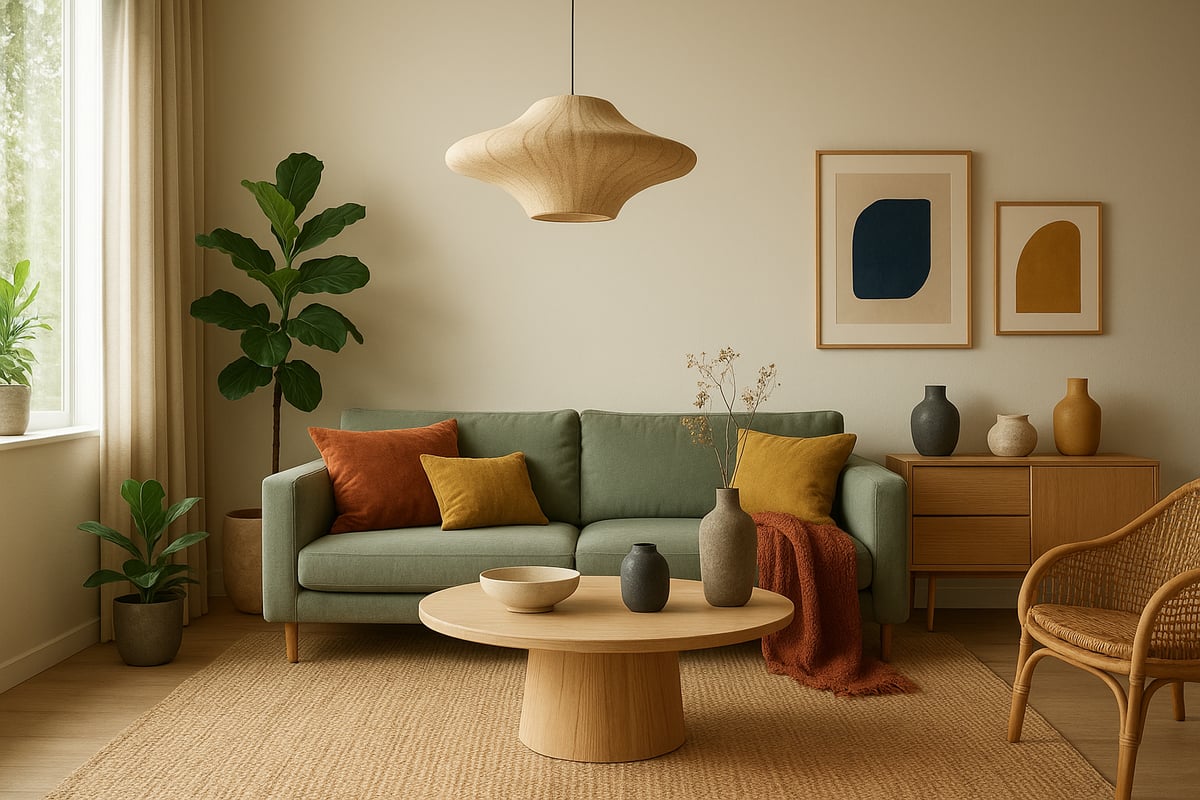
Trending Color Palettes
Color is foundational in house interior modern design, setting the tone for every room. In 2025, earthy hues like sage green, terracotta, and sand dominate, delivering warmth and serenity. Muted pastels and sophisticated neutrals are favored for their versatility, while bold accents such as deep blue, mustard, and burnt orange add vibrancy.
A recent survey found that 73% of designers recommend earthy color schemes for modern homes. These palettes not only reflect a desire for harmony but also complement sustainable materials and biophilic design. For a deeper dive into expert predictions, see the 2025 Interior Design Forecast.
Pairing these colors with natural light enhances the overall ambiance, making spaces feel both grounded and contemporary. Thoughtful color choices are the first step toward achieving a refined house interior modern design.
Innovative Materials and Finishes
Materials are evolving rapidly in house interior modern design, with an emphasis on sustainability and sensory appeal. Expect to see more use of bamboo, cork, and FSC-certified woods, all chosen for their eco-friendly credentials. Recycled glass and terrazzo provide visual intrigue, while eco-friendly composites offer durability without sacrificing style.
Matte metals like brushed brass or blackened steel add a subtle sheen, contrasting beautifully with textured ceramics. These finishes introduce layers of interest and tactile variety. Choosing innovative materials not only supports environmental goals but also enhances the longevity and value of your home.
Combining these elements helps create a distinctive, future-forward house interior modern design that feels both luxurious and responsible.
Layering Textures for Depth and Warmth
Texture is essential for adding depth and comfort to house interior modern design. In 2025, layering soft fabrics such as velvet and bouclé with harder surfaces like stone and metal is key. This creates inviting zones that encourage relaxation and social interaction.
Consider mixing a leather sofa with a woven jute rug and linen curtains. Area rugs, throws, and pillows in varied weaves and finishes transform spaces into cozy retreats. Texture also provides subtle visual breaks, making large, open rooms feel more intimate.
By thoughtfully layering textures, you can achieve a harmonious balance between sleek modernity and welcoming warmth in your house interior modern design.
Incorporating Natural Elements
Nature-inspired features remain central to house interior modern design. Indoor plants, living walls, and water features infuse spaces with vitality and help boost wellness. Stone accents, natural fiber décor, and wood elements foster a tangible connection to the outdoors.
Biophilic design, which incorporates organic shapes and patterns, is increasingly popular. Not only does this enhance the look of your home, but it also supports mental and physical health. Integrating natural elements creates a calming atmosphere, promoting relaxation and productivity.
These touches ensure your house interior modern design feels alive and connected to the world beyond your walls.
Lighting as a Design Element
Lighting in house interior modern design is more than functional; it is a sculptural statement. In 2025, expect to see dramatic pendant lights, LED strips, and layered lighting schemes that combine ambient, task, and accent sources.
Smart lighting systems allow you to control color temperature and intensity, boosting energy efficiency and mood. Sculptural fixtures, such as geometric pendants or custom wall sconces, double as art pieces. Layered lighting can highlight architectural features or define zones within open layouts.
The right lighting transforms the atmosphere, underscoring the sophistication and adaptability of your house interior modern design.
Layout Optimization and Space Planning
Optimizing your home's layout is essential for achieving the full potential of house interior modern design. Thoughtful space planning not only enhances visual appeal but also improves daily function and comfort. In 2025, effective layout strategies blend flexibility, flow, and purpose, creating interiors that feel both spacious and inviting.
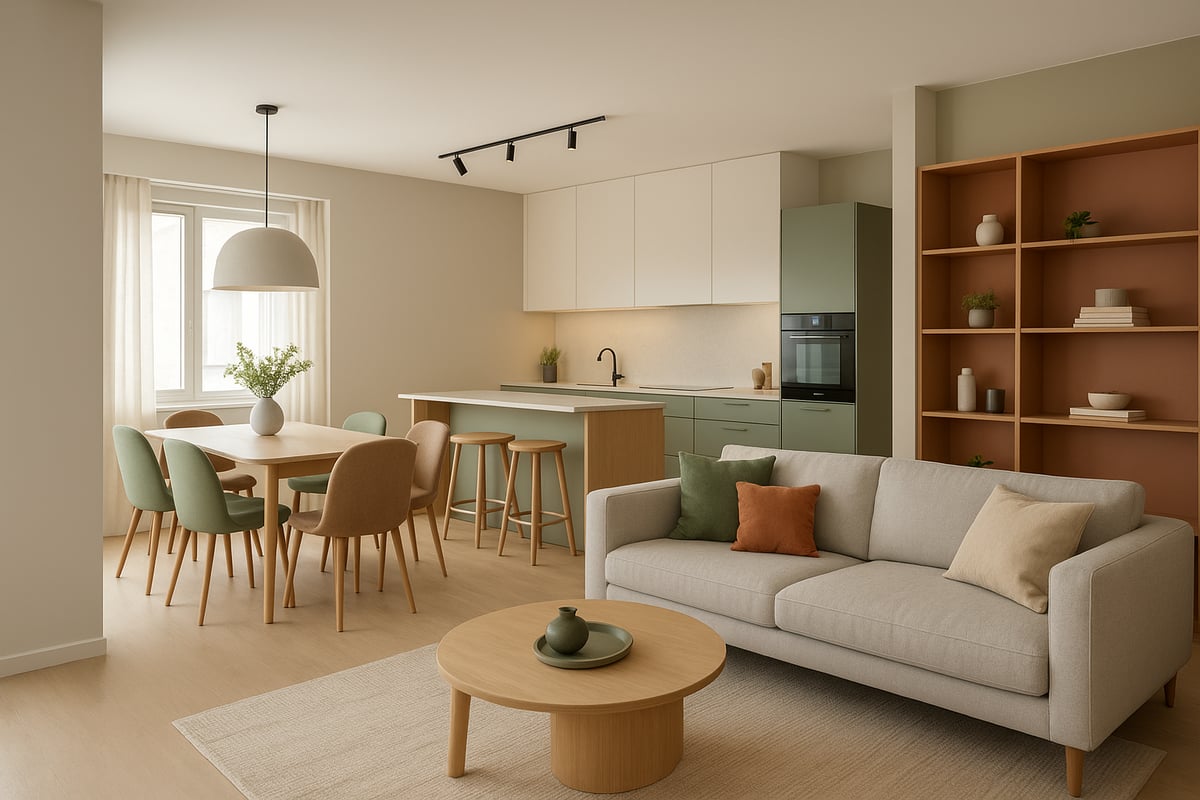
Open-Concept Living: Pros and Cons
Open-concept living is a hallmark of house interior modern design, offering a sense of spaciousness and adaptability. By removing unnecessary walls, this approach increases natural light and encourages social interaction.
Pros:
- Flexible use of space
- Enhanced light distribution
- Promotes togetherness
Cons:
- Noise can travel easily
- Less privacy for different activities
- Zoning becomes essential
A well-designed open layout, such as combining kitchen, dining, and living areas, exemplifies how house interior modern design maximizes both style and practicality.
Zoning and Defining Spaces in Open Layouts
In house interior modern design, zoning is crucial for maintaining function and organization within open layouts. Furniture arrangement, area rugs, and strategic lighting help create clear visual boundaries.
Consider using:
- Modular sofas to anchor living zones
- Rugs to define dining areas
- Pendant lights to highlight kitchen islands
Flexible dividers like sliding doors or open shelving add privacy without sacrificing openness. According to NAHB 2024, 60% of new builds now feature open-concept layouts, making effective zoning a key skill for homeowners embracing house interior modern design.
Maximizing Small Spaces with Modern Design
Even compact homes can benefit from house interior modern design by utilizing smart solutions. Multi-functional furniture, such as sofa beds or nesting tables, allows rooms to serve various purposes without feeling crowded.
Vertical storage and built-in cabinetry optimize every inch, while reflective surfaces amplify natural light. For curated options, explore the Modern and Contemporary Furniture Collection to find pieces that blend form and function seamlessly.
By incorporating these strategies, house interior modern design ensures small spaces remain stylish, practical, and clutter-free.
Flow and Circulation Principles
A successful house interior modern design prioritizes easy movement and logical flow. Unobstructed pathways connect rooms, while thoughtful furniture placement encourages conversation and accessibility.
Arrange seating to face focal points, such as a fireplace or media wall, and ensure there is enough space for foot traffic. Grouping chairs and sofas promotes social interaction, while maintaining clear sightlines enhances the sense of openness.
These principles not only improve daily routines but also contribute to a harmonious and welcoming atmosphere in any house interior modern design.
Ergonomics and Comfort in Modern Interiors
Comfort and health are at the forefront of house interior modern design. Choosing ergonomic furniture supports posture and productivity, making living spaces both beautiful and functional.
Popular features include:
- Adjustable desks for flexible work
- Supportive chairs with lumbar support
- Modular seating that adapts to different needs
According to Furniture Today 2024, 80% of homeowners now value ergonomic elements in their interiors. Prioritizing comfort within house interior modern design ensures that every room supports well-being as well as style.
Integrating Smart Technology for Inspired Living
Smart technology is revolutionizing house interior modern design by seamlessly blending convenience, efficiency, and style. In 2025, integrating intelligent solutions is no longer a luxury but a key component of inspired living. Homeowners are leveraging smart systems to enhance comfort, security, and personalization within every room.
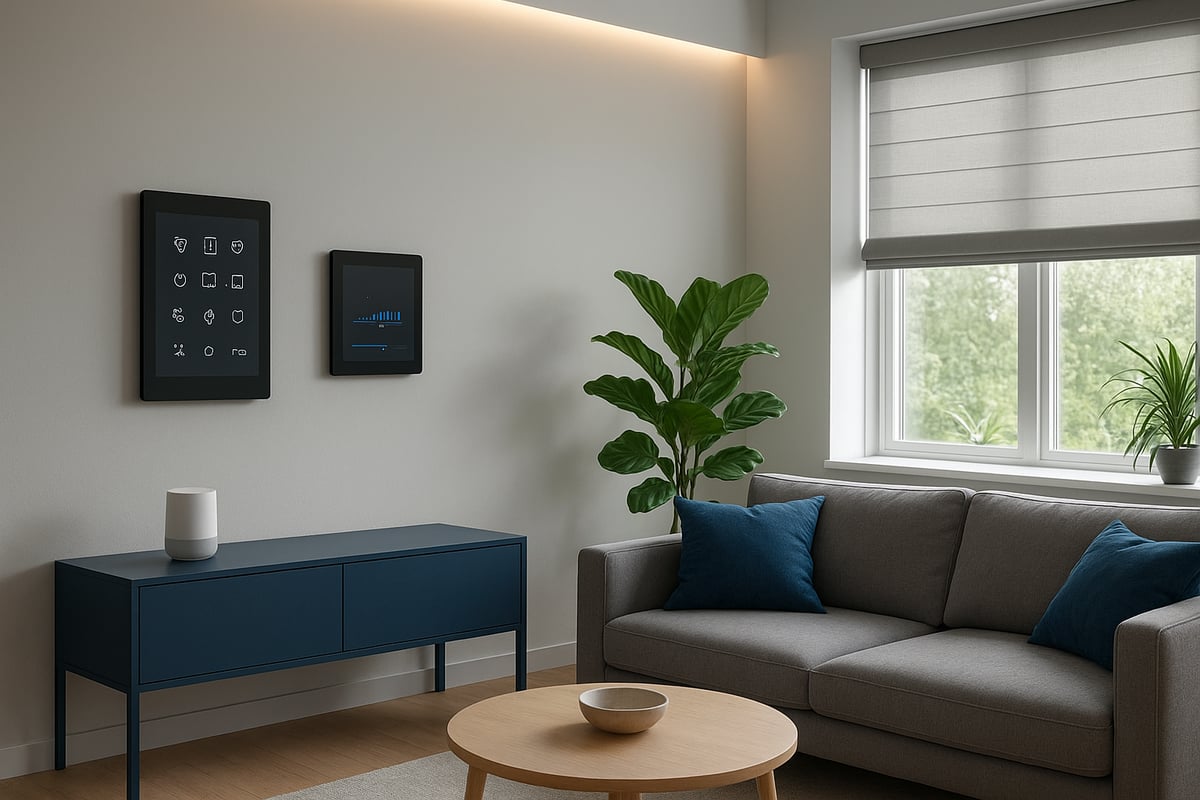
The Rise of the Smart Home
The adoption of smart home technology is transforming how we interact with our living spaces. According to Statista, 57% of households now use at least one smart device, reflecting a major shift in house interior modern design. Voice assistants, automation hubs, and connected appliances are becoming essential, streamlining daily routines and improving energy efficiency.
Smart homes offer real-time control over lighting, climate, and entertainment systems. Automated routines can adjust settings based on time of day or occupancy. These advancements allow homeowners to create intuitive environments that respond to their needs.
Incorporating smart solutions is central to a modern interior, providing both functional benefits and future-ready appeal.
Must-Have Smart Features for Modern Interiors
Key smart features are redefining house interior modern design in 2025. Smart lighting systems enable users to set moods, save energy, and automate schedules effortlessly. Intelligent thermostats maintain optimal comfort and reduce utility costs, while advanced security systems offer peace of mind with real-time alerts and remote monitoring.
Integrated sound and entertainment systems create immersive experiences, often controlled from a single device or app. Automated window treatments adjust for privacy and light control, further enhancing comfort and energy savings. For more inspiration on modern upgrades, explore these Home Decor Project Ideas 2025.
Selecting the right mix of features ensures every space is both functional and welcoming, meeting the evolving expectations of modern homeowners.
Balancing Technology and Aesthetics
A successful house interior modern design integrates technology without compromising visual harmony. Concealed wiring, wireless devices, and built-in charging stations keep spaces clutter-free. Minimalist smart devices and wall-mounted control panels blend seamlessly with contemporary décor, creating a cohesive look.
Designers recommend choosing tech products with clean lines and neutral finishes to maintain a sophisticated ambiance. For example, hidden speakers and recessed lighting allow technology to enhance the environment without drawing attention.
By thoughtfully balancing form and function, homeowners can enjoy advanced capabilities while preserving the aesthetic integrity of their interiors.
Future-Proofing Your Home
Staying ahead in house interior modern design means preparing for rapid technological change. Modular smart systems allow for easy upgrades as new devices emerge. Investing in interoperable platforms ensures different brands and products work together smoothly, reducing future compatibility issues.
Sustainable technology choices, such as energy-efficient appliances and solar integration, support eco-friendly living. According to CNET, 42% of homeowners plan to upgrade their smart tech within two years, emphasizing the importance of adaptability.
By prioritizing flexibility and sustainability, you ensure your home remains innovative, comfortable, and relevant for years to come.
Personalization, Art, and Decor Accents
Personalizing your house interior modern design is the key to transforming a space from simply stylish to truly inspiring. By thoughtfully curating art, selecting statement pieces, layering accessories, and weaving in global influences, you can ensure your home reflects your unique story while maintaining a cohesive, modern aesthetic.
Curating Meaningful Art and Decor
Selecting art and decor is one of the most personal aspects of house interior modern design. Start by choosing pieces that resonate with your values, interests, and experiences. A gallery wall is a classic way to showcase personality, whether through family photos, abstract prints, or works from local artists.
Mixing high-end pieces with affordable finds creates a sense of authenticity and depth. Consider supporting emerging artists or displaying travel mementos. According to Interior Design Trends 2025, immersive, personalized art displays are a defining trend for modern homes. Remember, the goal is to curate a space that feels both intentional and inviting.
Statement Furniture and Bespoke Pieces
In house interior modern design, statement furniture acts as the anchor of a room. Investing in a custom sofa, sculptural coffee table, or artisan lighting fixture can instantly elevate the atmosphere.
These pieces serve as focal points, drawing the eye and setting the tone for the surrounding decor. Choose items that reflect your style but also provide function and comfort. For example, a bold lounge chair in a vibrant fabric can add energy, while a handcrafted dining table brings warmth and character. Bespoke furniture ensures your space is as unique as you are, seamlessly blending with the overall design language.
Layering Accessories for a Lived-In Feel
Accessories are the finishing touch in house interior modern design, bringing warmth and personality to each room. Layering textiles like throws, pillows, and rugs creates visual interest and comfort. Opt for ceramics, books, and plants to add texture and life.
Rotate accessories seasonally to keep your interiors fresh. Designers recommend this approach to easily update the look without major changes. Group items in odd numbers for a collected, organic feel. The right accessories invite people to relax and enjoy the space, making your home both stylish and welcoming.
Embracing Global and Cultural Influences
Modern homes thrive on a mix of influences, and house interior modern design welcomes global touches. Incorporate travel finds, heritage textiles, or artisan crafts to tell your story and celebrate diverse cultures.
A Moroccan rug in a minimalist living room or Japanese ceramics on open shelving adds depth and authenticity. According to the Living Spaces Forecast: 2025 Trends in Home Décor, European consumers are increasingly blending traditional crafts with modern elements. This approach not only personalizes your space but also connects you to a broader design heritage, making your home truly one of a kind.
Sustainability and Wellness in Modern Interiors
Creating a home that nurtures both the planet and its inhabitants is at the core of house interior modern design for 2025. Today’s homeowners are prioritizing spaces that support well-being and minimize environmental impact, blending style with responsibility.
Eco-Friendly Materials and Practices
Sustainability is the foundation of house interior modern design. Choosing materials like FSC-certified wood, recycled metals, and low-VOC paints helps reduce environmental impact. Upcycling vintage furniture and décor not only conserves resources but also adds character to your space.
According to Forbes, 71% of consumers now value sustainable interiors. Consider these practices:
- Source furniture made from responsibly harvested wood.
- Opt for recycled glass and metals.
- Use non-toxic finishes and paints.
- Give new life to old pieces through creative upcycling.
By making mindful choices, you create an interior that is both modern and eco-conscious.
Designing for Health and Well-Being
A key goal of house interior modern design is supporting physical and mental health. Maximizing natural light with large windows, skylights, and open layouts can improve mood and productivity. Air quality is enhanced by incorporating air-purifying plants and using HEPA filtration systems.
Circadian lighting, which mimics natural daylight patterns, is gaining traction for its positive impact on sleep and well-being. Features like living walls and biophilic elements can further connect indoor spaces to nature. For more inspiration, explore Biophilic Design Elements for Interiors to discover products that infuse wellness into your home.
Energy Efficiency and Resource Management
House interior modern design embraces technology that conserves resources and reduces costs. Smart thermostats, efficient appliances, and solar integration are becoming standard in sustainable homes. Water-saving fixtures, such as low-flow faucets and rainwater harvesting systems, also contribute to eco-friendly living.
A simple comparison table:
| Feature | Benefit |
|---|---|
| Smart thermostats | Lower energy bills |
| Energy Star appliances | Reduced consumption |
| Solar panels | Renewable energy source |
| Water-saving fixtures | Decreased water usage |
These solutions make your home greener and more cost-effective.
The Future of Sustainable Modern Design
Looking ahead, house interior modern design is moving toward circular principles and zero-waste goals. Modular construction and adaptable interiors allow spaces to evolve with your needs, minimizing waste over time.
The World Green Building Council reports that 54% of new developments are targeting net-zero emissions by 2030. For a deeper dive into these emerging trends, the Interior Design Market Trends and Forecast Report offers valuable insights on how the industry is evolving toward sustainability.
By embracing these forward-thinking strategies, you ensure your home is both future-ready and environmentally responsible.
After exploring the key design principles, color and material trends, and the smart technology shaping modern interiors for 2025, you might feel inspired to bring these ideas into your own home. Whether you're looking to optimize your space, personalize your decor, or embrace sustainable solutions, having a solid foundation in interior design can make all the difference. If you're ready to take the next step and turn inspiration into action, I encourage you to Get started with Interior Design. This masterclass offers practical guidance to help you confidently create a home that truly reflects your vision.

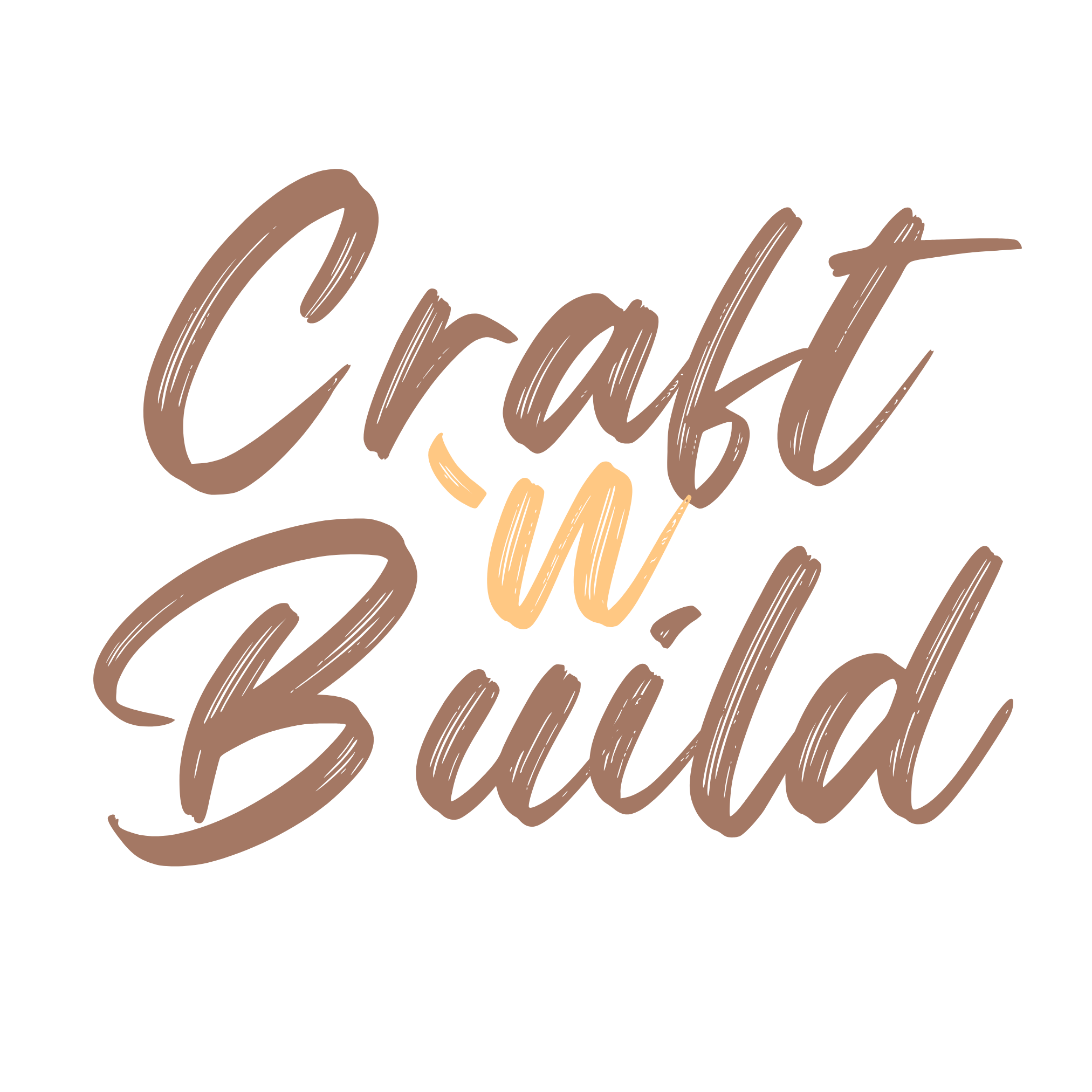

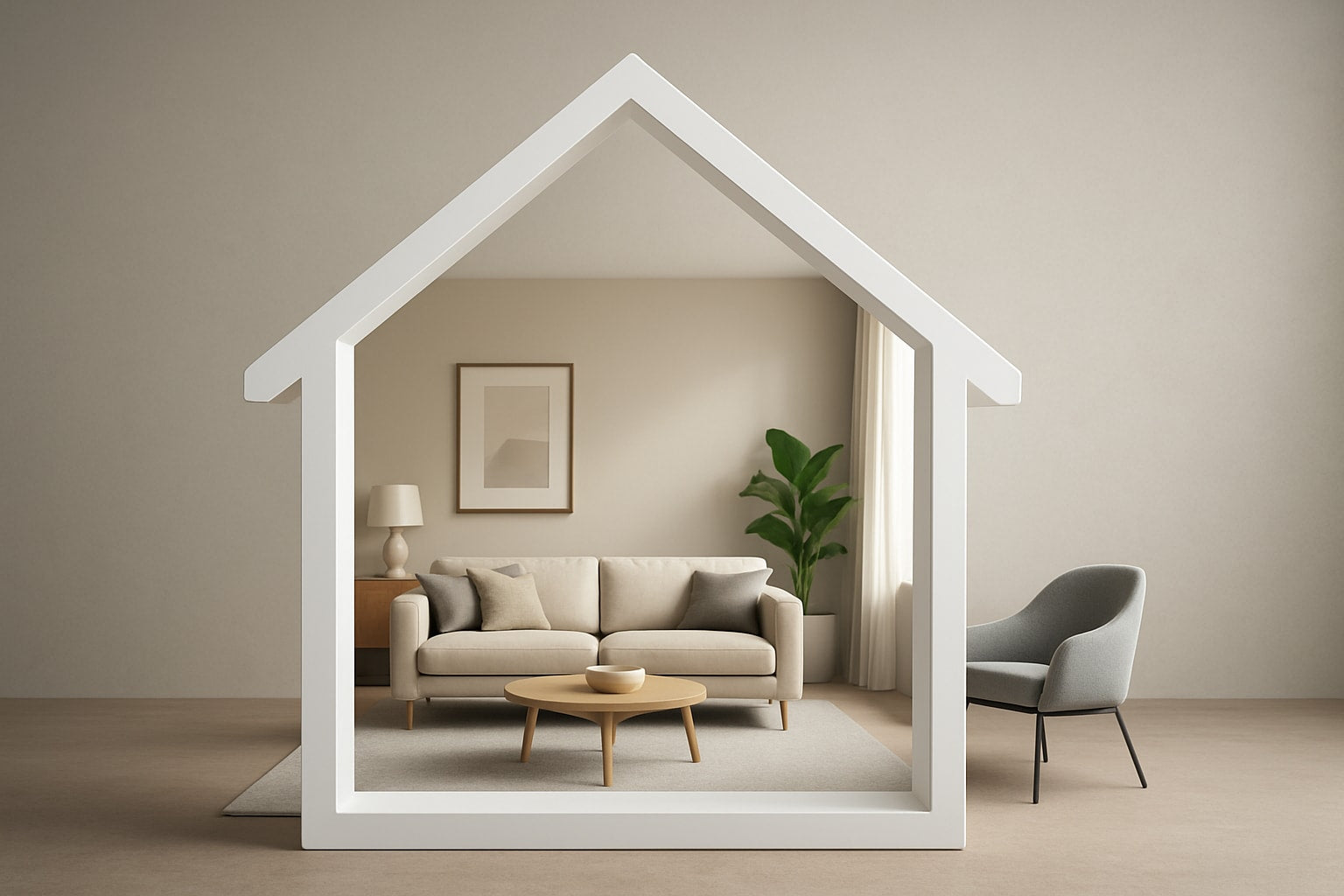
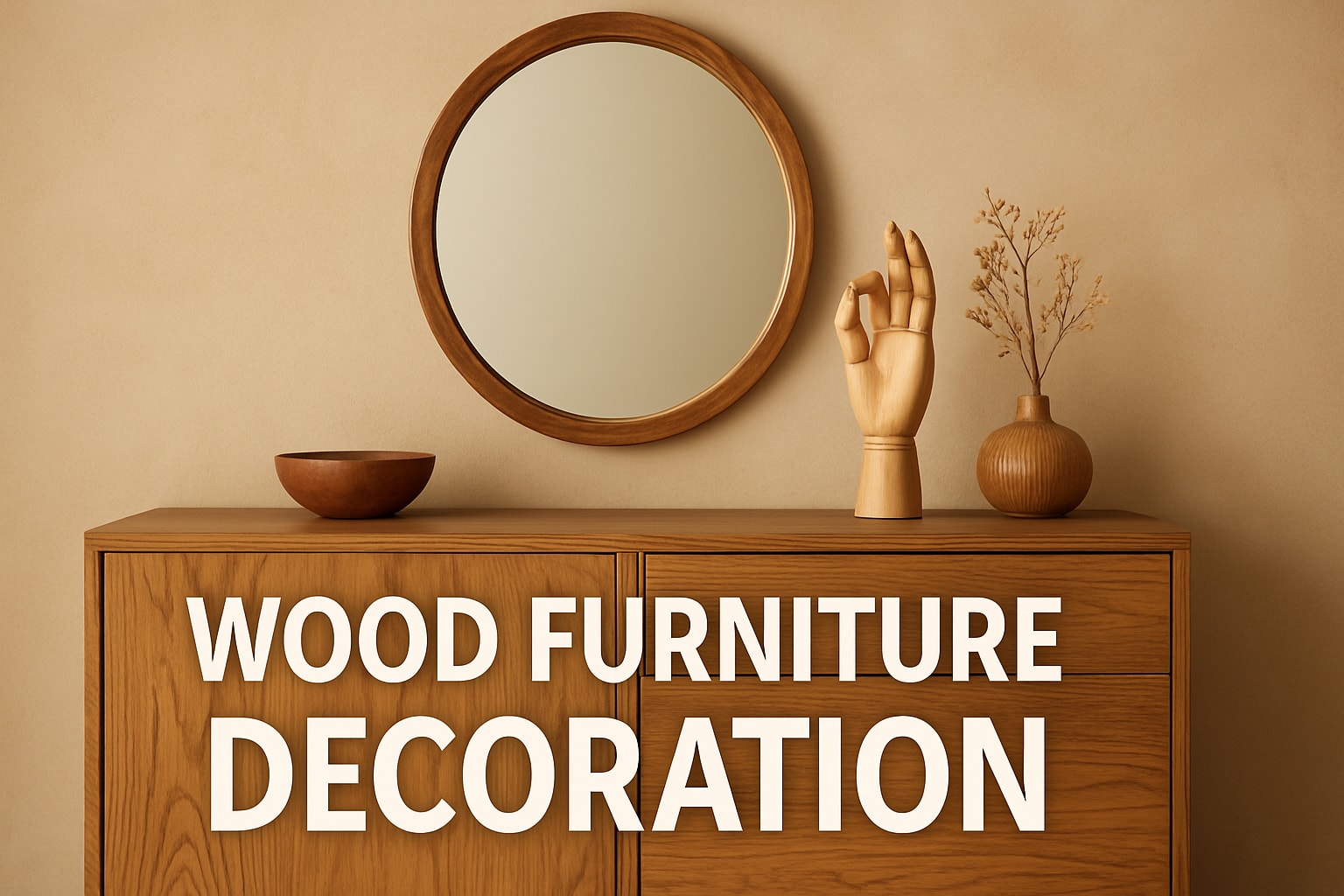
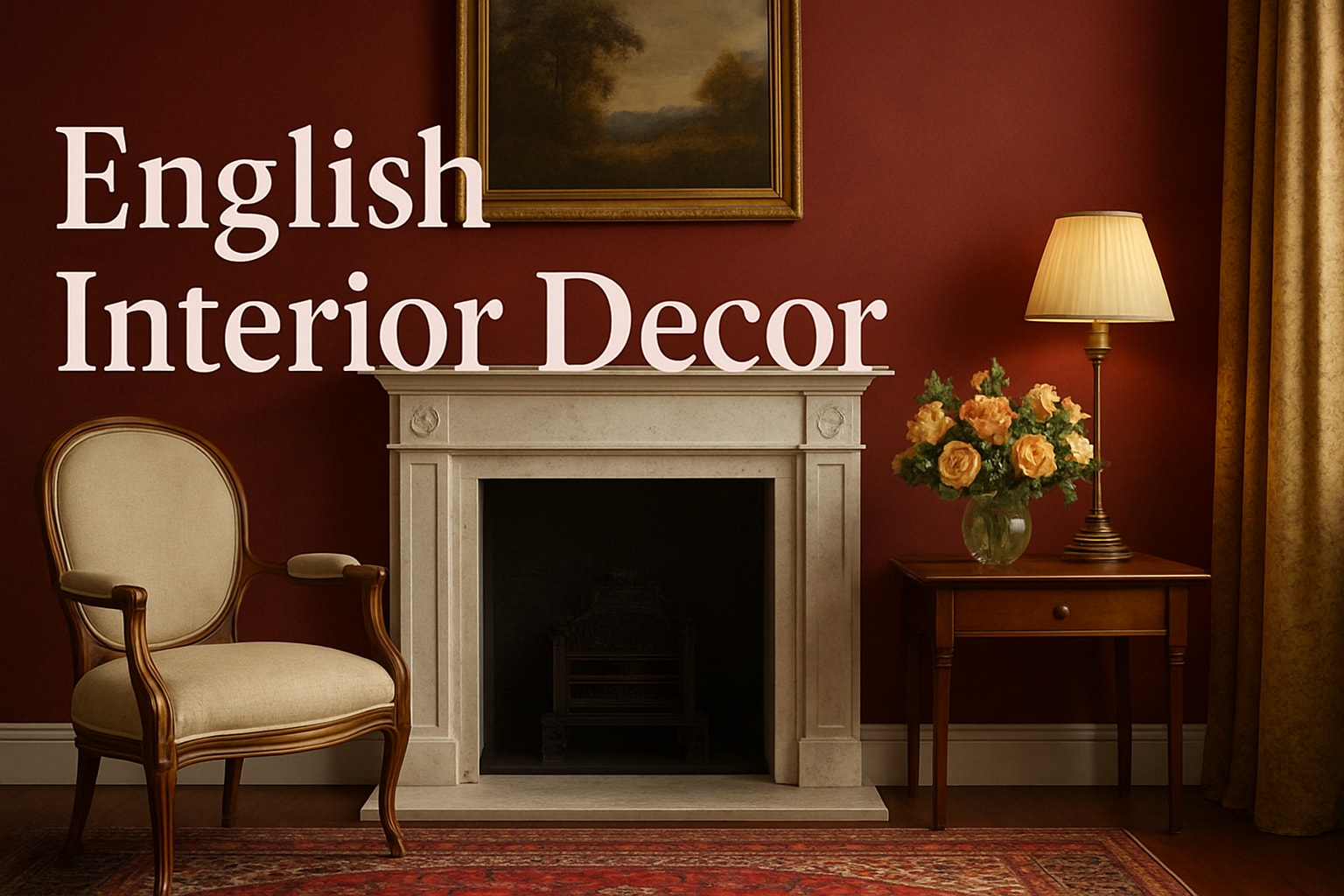
Share:
Wood Furniture Decoration Guide: Creative Tips for 2025